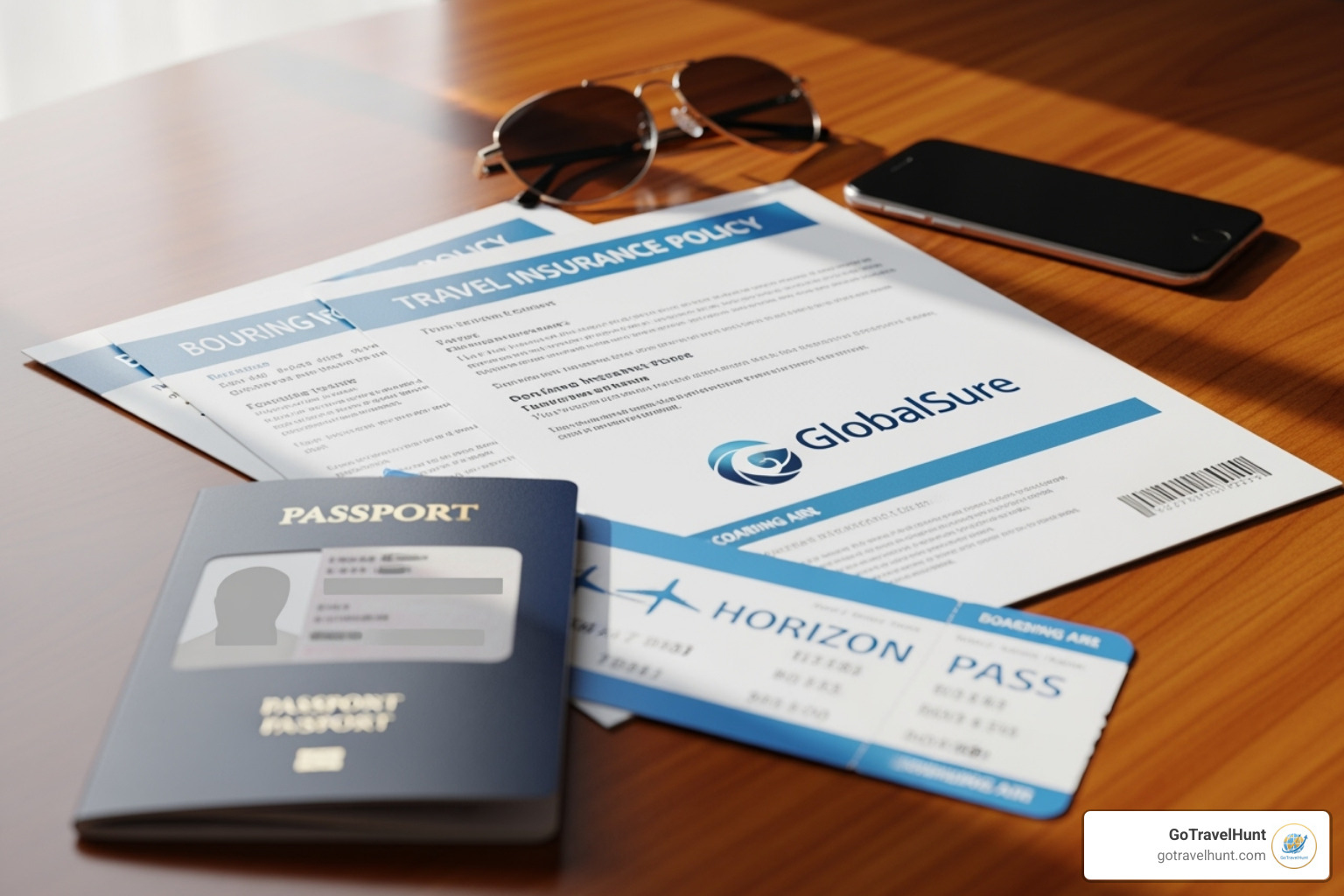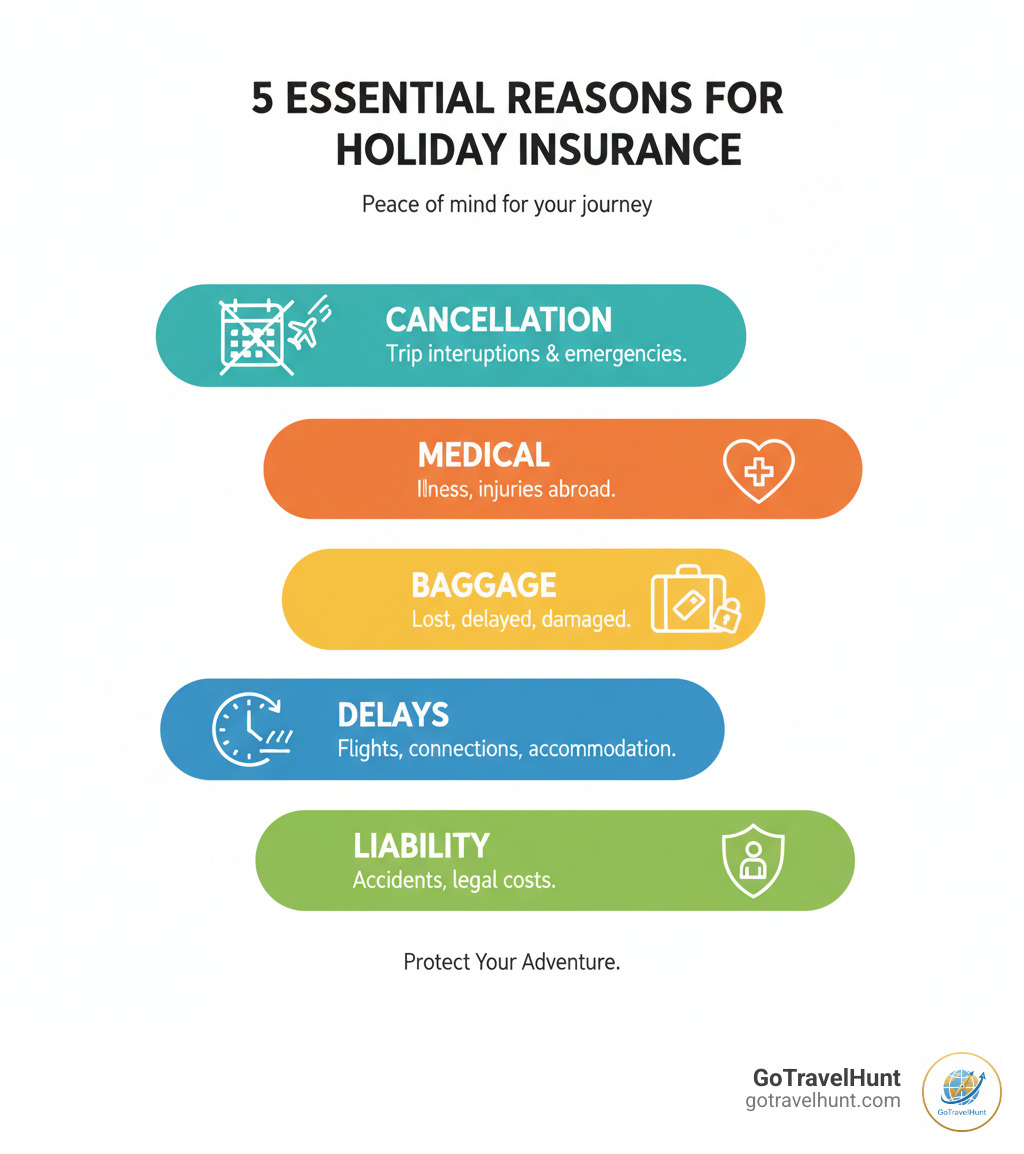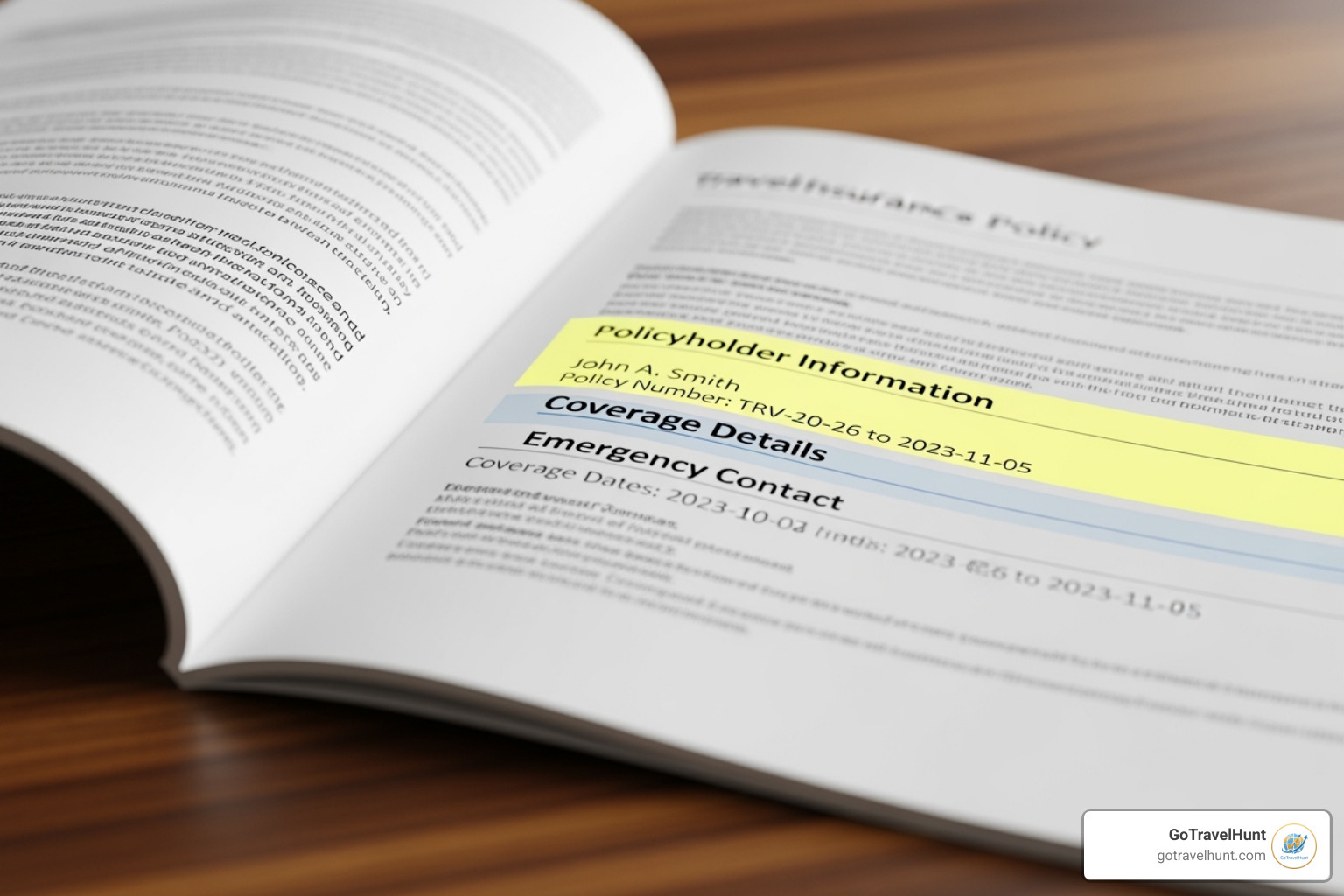Best Holiday Insurance 2025: Smart & Safe Travel
Why Holiday Insurance is Your Most Essential Travel Companion

Best holiday insurance protects you from unexpected financial losses when things go wrong on your trip. Whether it’s a cancelled flight, a medical emergency abroad, or lost luggage, the right policy can save you thousands of dollars and provide invaluable peace of mind.
Top 5 Best Holiday Insurance Options (2025):
| Provider | Best For | Key Strength | Starting Cost |
|---|---|---|---|
| Travelex Insurance Services | Overall Coverage | Highest rated by U.S. News (2025) | 5-10% of trip cost |
| Allianz Travel Insurance | Emergency Medical | Up to 80% CFAR reimbursement | Varies by trip |
| Berkshire Hathaway | Comprehensive Plans | 88% policy score from Which? | ~$136 for basic |
| Seven Corners | Pre-existing Conditions | Up to $500k medical coverage | ~$124 for basic |
| World Nomads | Adventure Travel | Specialized activity coverage | ~$91 for standard |
What you need to know:
- Travel insurance typically costs 4-10% of your total trip cost.
- The average basic policy costs around $127 for a 10-day trip.
- Medical coverage abroad is the most critical feature (minimum $50k recommended).
- Buy insurance within 14 days of booking to access all benefits.
- One claim is made every minute in the UK alone.
Medical treatment abroad can cost tens of thousands of dollars. A stomach bug in California could cost $100,000 without coverage, while a fall requiring hip treatment in Spain plus emergency flights home could be $15,000. The average medical claim was £1,724 in 2023, but costs can soar much higher.
Beyond medical emergencies, cancellation is the most common reason for claims. Without insurance, you lose every penny of non-refundable bookings due to illness, family emergencies, or work obligations.
I’m Ramy Saber, founder of GoTravelHunt. I’ve helped thousands of travelers find the best holiday insurance to protect their adventures. The right coverage makes all the difference between a ruined trip and a protected journey.

Simple guide to best holiday insurance:
Holiday insurance is a crucial financial safety net that safeguards your trip investment and well-being. Think of it as an essential travel companion, right alongside your passport. Unexpected events like lost luggage or a minor injury can lead to significant financial burdens without adequate coverage. This small investment prevents massive losses, ensuring your adventures remain stress-free.
Decoding Your Policy: Key Features to Look For
Understanding what your best holiday insurance policy covers can save you from major headaches later. Here are the essential features to look for.
Trip Cancellation & Interruption
This coverage is your financial safety net if unexpected events derail your plans.
Trip cancellation protects your prepaid, non-refundable costs if you must cancel before leaving. Covered reasons typically include unexpected illness, severe weather, or certain work situations. Most policies reimburse 100% of your costs for these scenarios.
Trip interruption applies after your trip has started. If you need to return home early for a covered reason, this benefit reimburses the unused portion of your trip and last-minute flights back, often up to 125% of your trip cost. For more details, see our guide on travel cancellation insurance.
Emergency Medical & Evacuation
Your regular health insurance likely offers little to no coverage overseas, making this the most critical part of your policy.
We recommend at least $50,000 in emergency medical coverage for international trips ($100,000 for cruises). Medical bills abroad can be shockingly expensive, and this coverage protects you from catastrophic costs.
Emergency medical evacuation is equally vital. It covers transport to the nearest adequate medical facility if you’re seriously injured in a remote area. These evacuations can cost $25,000 or more, so look for at least $250,000 in coverage.
For international travel, primary coverage is preferable to secondary coverage. Primary pays first, simplifying the claims process, while secondary only pays after your domestic insurance has settled its portion.
Repatriation costs, which cover bringing a deceased traveler home, are another necessary feature.
Baggage & Personal Effects
This coverage reimburses you for lost, stolen, or damaged items during your trip. Pay close attention to the limits: policies have an overall maximum but also impose per-item limits and specific limits for valuables like electronics. If you’re traveling with expensive gear, you may need extra coverage.
Baggage delay benefits are also useful. If your bags are delayed for a set number of hours (e.g., 6-12), the policy reimburses you for essential purchases like toiletries and basic clothing while you wait.

Common Exclusions to Watch For
Even the best policies have exclusions. Read the fine print (the Product Disclosure Statement) to avoid rejected claims. Common exclusions include:
- Known events: Buying insurance after a hurricane is named won’t cover you for hurricane-related losses.
- High-risk sports: Activities like skydiving or whitewater rafting often require an adventure sports add-on.
- Alcohol or drug-related incidents: Claims resulting from intoxication are almost always denied.
- Irresponsible behavior: Leaving belongings unattended or not locking your room can invalidate a claim.
- Other exclusions: Fear of travel, medical tourism, and certain pregnancy-related situations are often not covered.
Always read your policy document thoroughly and contact the insurer with any questions before you travel.
COVID-19 & Epidemic Coverage
Most comprehensive policies now include epidemic coverage for scenarios related to COVID-19. This typically includes:
- Medical treatment if you contract the virus during your trip.
- Trip cancellation or interruption if you or a travel companion get sick.
- Quarantine expenses for extra accommodation and meals if you must isolate.
Coverage details vary significantly, so always verify the latest terms and conditions, especially regarding government advisories or pre-departure testing requirements.
A Step-by-Step Guide to Choosing the Best Holiday Insurance
Finding the best holiday insurance is easier when broken down into manageable steps. Follow this guide to choose the right policy with confidence.
Step 1: Assess Your Trip & Traveler Needs
Understanding your specific needs is the foundation of finding coverage that actually protects you. Consider these factors:
- Destination: A trip to London has different requirements than a trek in the Himalayas. Some “worldwide” policies exclude the USA, Canada, and the Caribbean due to high medical costs. Our European travel insurance guide offers region-specific advice.
- Trip Cost: Calculate your total non-refundable costs (flights, hotels, tours) to determine how much cancellation coverage you need.
- Traveler Ages: Premiums are often higher for older travelers (65+), who may need a specialist insurer. Family policies can offer better value when traveling with children.
- Activities Planned: Standard policies often exclude adventure sports like skiing or scuba diving. You may need an add-on or a specialized policy. Cruises also require specific coverage for scenarios like missed ports or medical evacuation from a ship.
Step 2: Compare Different Plan Types
Match the right plan type to your travel style to get the best value.
- Single Trip vs. Annual: A single-trip policy is ideal for one vacation. If you travel multiple times a year, an annual multi-trip policy is often more cost-effective and convenient.
- Comprehensive vs. Medical-Only: Comprehensive plans are the standard, covering cancellation, medical, baggage, and more. If you only need to fill the medical gap in your existing coverage, a more affordable medical-only plan might suffice.
- Family vs. Individual: Family policies, which cover two adults and their children under one plan, are almost always more economical than buying separate policies for each person. For non-traditional journeys, see our One Way Travel Insurance Complete Guide.
Step 3: Evaluate Providers and Policies
Once you know your needs, it’s time to compare policies.
- Use comparison tools: These websites let you enter your trip details once to see dozens of policies side-by-side, helping you filter by coverage limits and ratings to find the best value.
- Read customer reviews: See what actual travelers say about a company’s claims process and customer service. Real stories reveal what to expect if something goes wrong.
- Check financial strength ratings: Agencies like A.M. Best rate an insurer’s ability to pay claims. A strong rating (e.g., ‘A+’ or ‘A’) ensures the company is financially stable.
The CHOICE travel insurance buying guide offers excellent, unbiased advice on this process, emphasizing the need to read the Product Disclosure Statement (PDS) for full details.
Step 4: Understand the Claims Process
Knowing the claims process beforehand can save you enormous stress.
- Required Documentation: Keep everything. This includes medical receipts, doctor’s notes, police reports for theft, and written statements from airlines for delays. Take photos of all documents and damaged items.
- Filing Deadlines: Most insurers require you to file a claim within a specific timeframe (e.g., 90 days). Contact your insurer as soon as an incident occurs to start the process.
- How Long Claims Take: Simple claims may take a week or two, while complex ones (major medical, trip cancellation) can take four to six weeks. Providing complete documentation promptly is the key to speeding up the process.
Frequently Asked Questions About Holiday Insurance
Here are answers to the most common queries about finding the best holiday insurance.

How much does the best holiday insurance cost?
The cost of best holiday insurance typically falls between 4% and 10% of your total trip cost. For a $3,000 vacation, that’s about $120 to $300. The average basic plan for a 10-day trip is around $127.
Your actual cost depends on several factors:
- Age: Older travelers typically pay more.
- Trip Duration: Longer trips cost more to insure.
- Destination: Countries with expensive healthcare (like the U.S.) increase premiums.
- Coverage Level: Comprehensive plans cost more than medical-only policies.
- Add-ons: Optional benefits like CFAR or adventure sports coverage increase the price.
What is ‘Cancel For Any Reason’ (CFAR) and is it worth it?
“Cancel For Any Reason” (CFAR) is an optional upgrade that lets you cancel your trip for any reason not otherwise covered by your policy. It provides the ultimate flexibility.
However, there are key limitations. CFAR typically reimburses only 50% to 75% of your non-refundable trip costs (though some plans offer up to 80%). It also increases your premium by 40-50% and must be purchased within 14 to 21 days of your initial trip deposit.
Is it worth it? CFAR is valuable for expensive trips, travelers with unpredictable schedules, or anyone booking far in advance. For most standard trips, regular cancellation coverage is sufficient.
How are pre-existing medical conditions handled?
A pre-existing medical condition is any health issue that existed before you bought your policy. Standard policies often exclude these, meaning you won’t be covered if the condition disrupts your trip.
Many comprehensive policies offer a pre-existing medical condition waiver, which removes this exclusion. To qualify, you must typically buy your policy within 10 to 21 days of your initial trip deposit, insure 100% of your trip costs, and be medically stable for a “look-back period” (usually 60-180 days) before purchase.
Full disclosure is essential. Failing to declare a condition can void your entire policy. If you have complex medical needs, a specialist broker can help. Organizations like the British Insurance Brokers’ Association can connect you with insurers who specialize in these cases.
Is my credit card’s travel insurance enough?
Probably not. While premium credit cards offer some travel benefits (e.g., trip cancellation, lost baggage), they rarely provide adequate protection on their own. The main gaps are:
- Lower coverage limits than dedicated policies.
- Secondary medical coverage, which only pays after your primary health insurance.
- No emergency medical evacuation coverage, which can be extremely expensive.
- Narrower reasons for cancellation.
Think of credit card insurance as a bonus, not your primary protection. For any significant trip, a separate, comprehensive best holiday insurance policy is necessary.
When is the best time to find the best holiday insurance?
The best time to buy is immediately after making your first trip payment or deposit. Buying early is crucial because it open ups time-sensitive benefits that disappear if you wait, such as:
- Pre-existing medical condition waivers
- “Cancel For Any Reason” (CFAR) coverage
- Financial default coverage (if your tour operator goes bankrupt)
Most importantly, buying early protects you against cancellation from the moment you book. If you book a trip six months in advance and get sick three months later, you’re covered. Waiting to buy insurance means you’re unprotected for months.
Conclusion: Your Next Adventure Awaits
This guide has shown that best holiday insurance isn’t just paperwork—it’s your ticket to exploring the world without worry. Knowing you’re protected from medical emergencies, cancellations, and lost luggage allows you to fully immerse yourself in your adventure.
The key to finding the right policy is simple: assess your specific needs, compare providers wisely, and read your policy document thoroughly. Understanding the details is what makes the difference when you need to file a claim.
At GoTravelHunt, our mission is to make travel planning easy, stress-free, and affordable. We believe unforgettable journeys begin with feeling confident and protected from the moment you book.
Your next adventure is waiting. With the right best holiday insurance safeguarding your investment and well-being, you can travel with the confidence that you’re prepared for anything. The world is calling—answer it with confidence.
Ready to start planning? Plan your next trip with our Travel Insurance Australia guide and find how easy stress-free travel can be.













